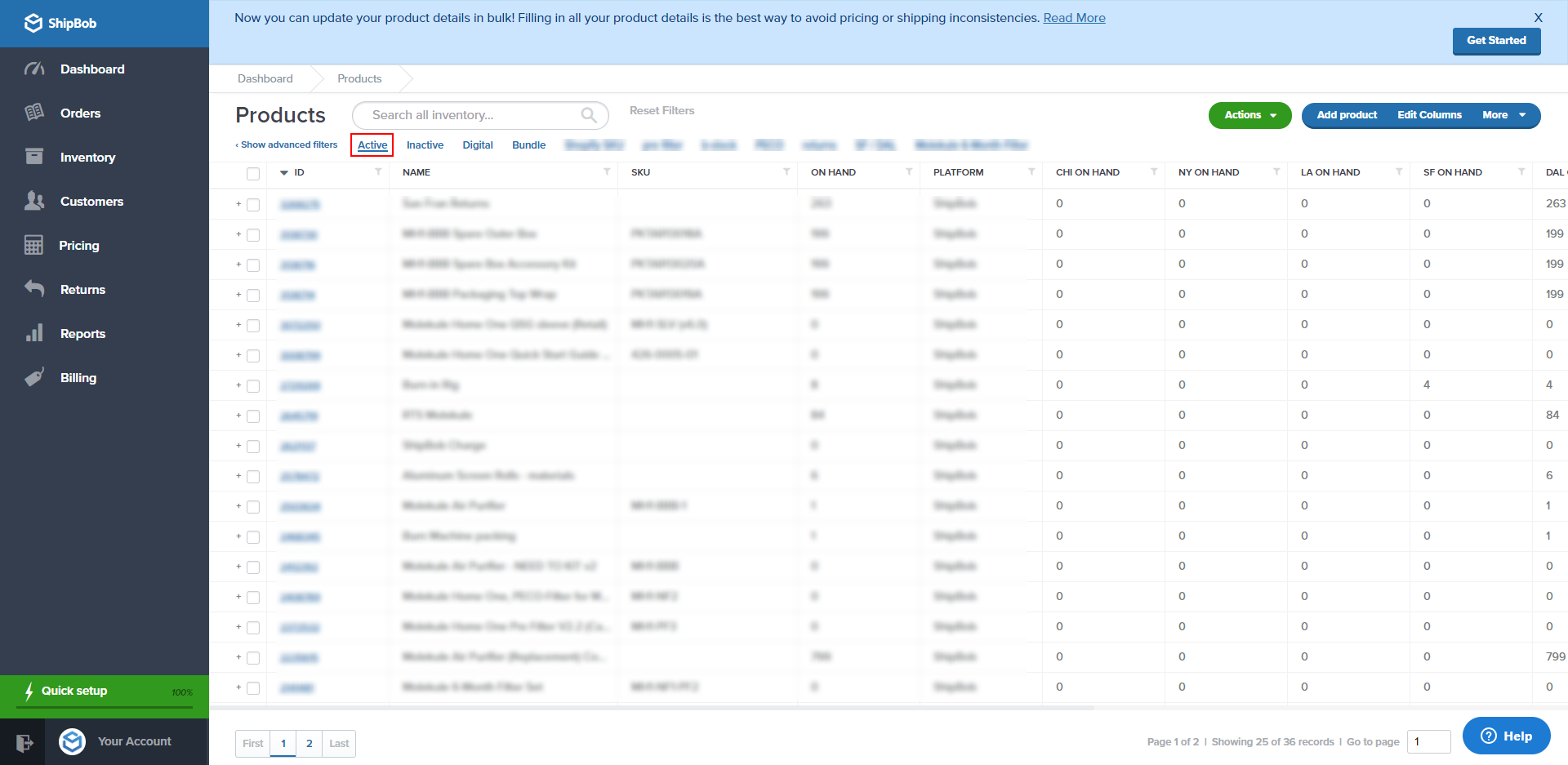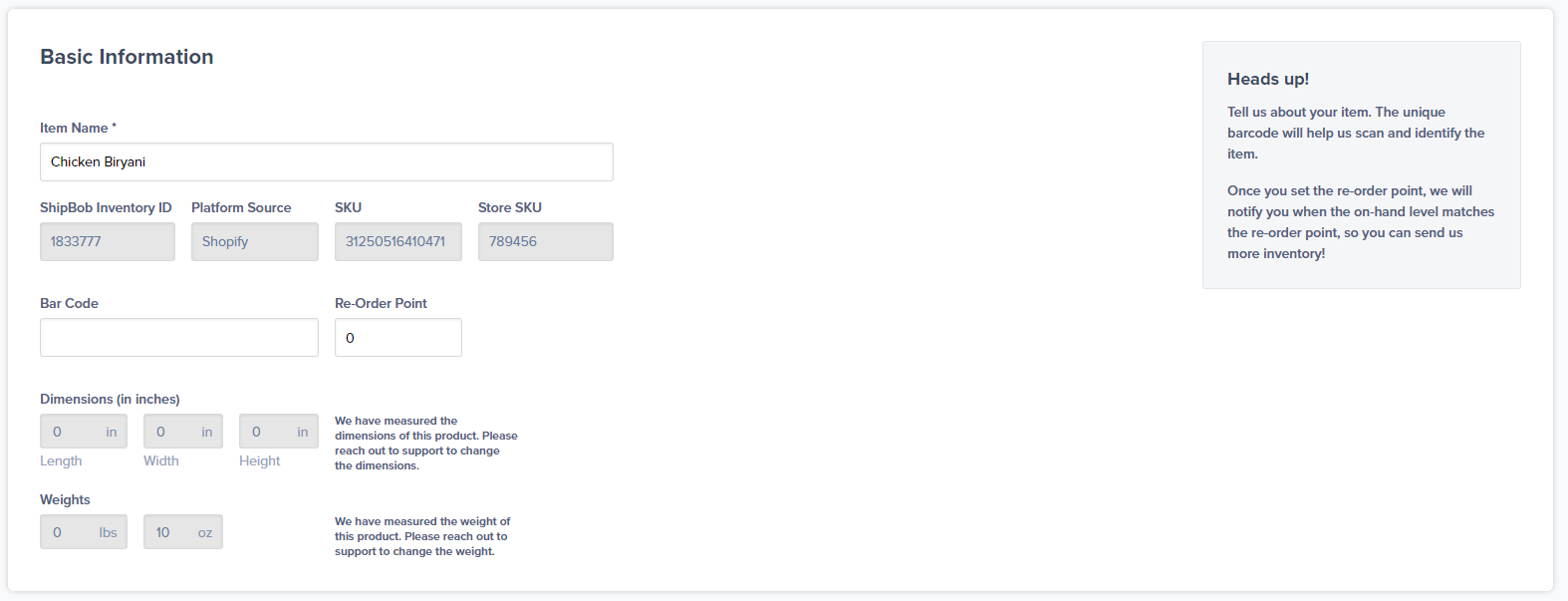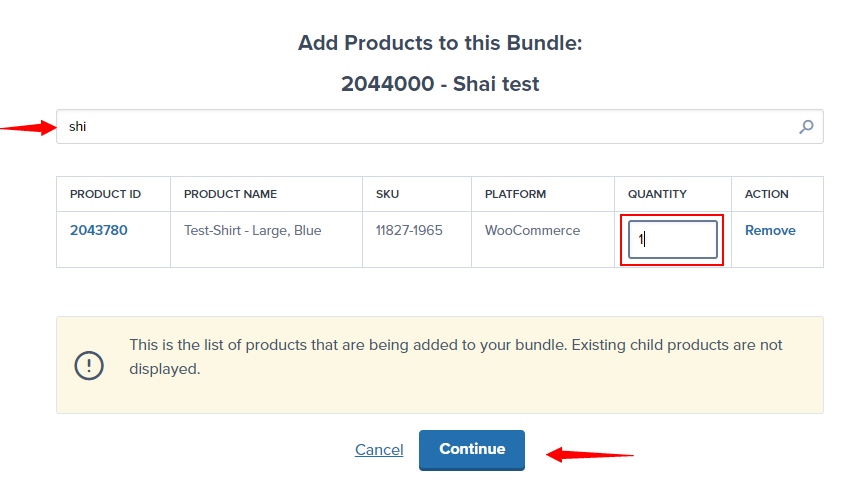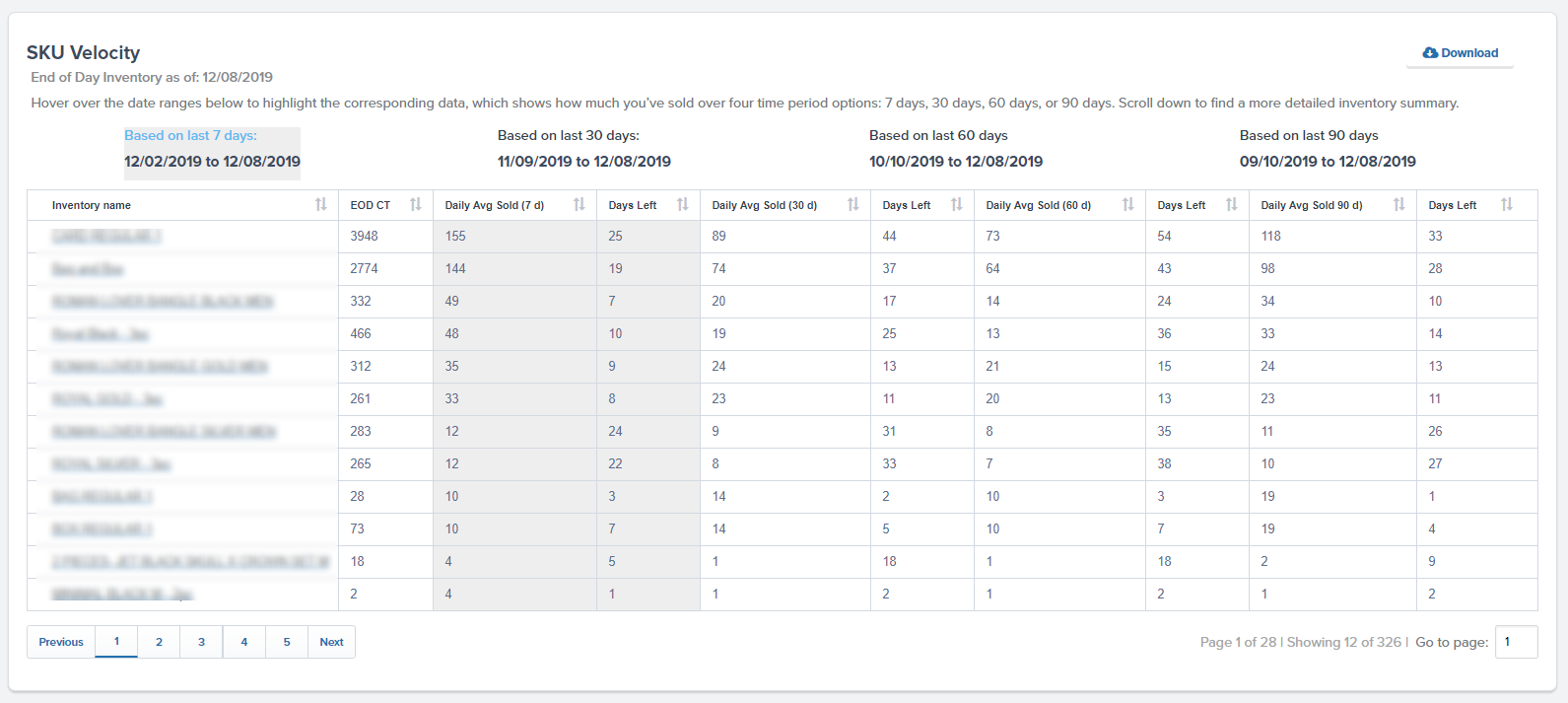Table of Contents
** Minutes
Why is SKU management so important for ecommerce?
SKU management best practices + processes
Let’s imagine the following scenario:
Say you run an online apparel store. You sell tops, pants, shirts, and dresses in different sizes, colours, and patterns. But different product variations quickly increase your SKU count, or total number of products, causing ecommerce inventory to become harder to organise, track, keep in stock, and pull data on.
Managing inventory at the SKU level can be a time-consuming and challenging process. However, with the right resources, processes, and systems in place, you can more easily manage SKUs to better control inventory and make better business decisions.
In this article, you will learn the basics of SKU management in ecommerce, why it’s important, and how a third-party logistics (3PL) like ShipBob can help.
What is a SKU?
SKU is the acronym for stock keeping unit, which is an alphanumeric code made of both letters and numbers to uniquely identify and keep track of each product in your inventory. The code itself helps to categories items by features that differentiate it from similar products.
What is SKU management?
SKU management is a subset of inventory management that helps to identify, track, and categorize sellable inventory using a unique alphanumeric code. SKU management helps businesses keep their inventory organised, as all information regarding a specific product can be pulled up quickly (such as how many units are in stock).
For example, having a SKU called ‘248RSJGDFN’ might seem like gibberish but it is actually may be more helpful than ‘Red Shirt’ since you can easily get that confused with similar shirts. In fact, you need a separate SKU name for each size of the same red shirt.
Managing SKUs is essential if you sell more than one product. While it may start as an easy process (e.g., if you have all of your inventory at home), it becomes more critical as you grow, expand your product line, and sell more products, more quickly.
Think about if you are working with a third party, like ShipBob or Amazon. Proper SKU management allows these companies to keep track of all inventory in their large fulfilment centres and easily locate each SKU, so they can be accurately picked, packed, and shipped as orders are placed. This can be done using a warehouse management system (WMS), which keeps track of their different SKUs, so pickers can easily pull up SKU details (e.g., photos and other info) and help ensure they have the right item.
Why is SKU management so important for ecommerce?
SKU management is essential for ecommerce as it gives you specific details about every item in your inventory to significantly improve order accuracy during the warehouse picking and packing process.
With proper SKU management, you can easily pull inventory performance data for each SKU to help you forecast demand, identify selling trends, and identify best-selling and slow-selling products, so you know how frequently to reorder each SKU.
SKU management can be optimised by implementing the right technology and inventory management software, even helping to prevent both stockouts and overstocking.
Since inventory is constantly moving throughout the ecommerce supply chain, inventory software makes it easier to view real-time inventory levels, analyse SKU performance, update product information and details quickly, and reduce human error throughout the fulfilment process.
SKU management best practices + processes
There’s a lot that goes into managing each SKU. For large, established brands, an ERP inventory system can be used to make the process easier and save you time, but it can be costly. For others, there are several ways to manage SKUs without investing in pricey software and technology. Below is an overview of the best practices and processes used by direct-to-consumer (DTC) brands.
1. Standardize your SKUs with a simple framework
Having a standardized method or naming convention for managing SKUs avoids confusion and makes it easier for your team and your logistics partners to work with. A simple SKU framework is the “manufacture-colour-size” format.
It’s also important to keep the code short (about 8-12 alphanumeric digits). The shorter and simpler the code, the easier it is for your team to identify quickly.
2. Set SKU-specific reorder points
Some items sell faster than others, so it wouldn’t make sense to order the same amount of inventory for every SKU at the same frequency.
There is a simple reorder quantity formula you can use to determine points for each SKU. To calculate it, you simply multiply the average daily units sold by the average lead time:
Optimal Reorder Quantity for a SKU = Avg. Daily Units Sold x Avg. Lead Time
Calculating reorder points helps optimise SKU levels and ensure you replenish inventory in time. Though the calculating is simple, it can be a time-consuming process to manually calculate reorder points for a variation of SKUs.
Many inventory apps help you use historical data to determine an optimal reorder point for each SKU and automatically set reorder points. This takes the manual work out of the equation, and you also will have data aggregated to pull for inventory reporting.
3. Group SKUs by similarities
Let’s say you sell pots and pans in different colours. If a customer lands on your online store and sees the pan they want, you can also showcase the different colours that it comes in. That way, if the customer first sees it in blue, but would prefer it in black, then you can easily display the different colours that specific pan comes in.
By grouping SKUs by a similarity (like size or colour), you can set up your online store to show the different options for a specific product.
You can identify which types of products are in high demand, and even take it a step further by seeing which options most customers prefer for that specific high-demand product.
4. Avoid confusing letters, numbers, and spaces
When creating a SKU, do your best to avoid any confusion. For example, a lower case “l” and an upper case “I” look identical in many fonts. To prevent confusion when using letters, make sure every letter is capitalised. Be sure to never begin any product with a zero, “0.” These can also be mistaken for the letter “O.”
Furthermore, do not include special symbols such as “/” or “%.” The goal of the SKU is to be easily read, and it can be difficult deciphering a SKU when it looks like “L/%3EXCV55^&.”
5. Calculate your SKU ratio
A SKU ratio can help you determine how each SKU is impacting sales. The SKU ratio refers to the number of SKUs in a gross profit range divided by the total number of SKUs you have, and then multiply by 100 percent.
You can easily determine SKU ratio using a spreadsheet. Here is a simple step-by-step overview:
- In your spreadsheet, create four columns: SKU, Sales Price, Cost, and Gross Profit.
- Ceate the gross profit ranges (e.g., less than $10, $10-$19.99, etc.).
- Input the SKUs that fall into the different ranges to calculate the SKU ratio.
- Multiply the number of SKUs in each gross profit by range 100% to get your SKU ratio.
6. Compare SKU ratio to sales ratio
After you calculate the SKU ratio, compare it to your sales ratio. Using the same gross profit data, you will need to create a new column with the number of sales units per gross profit range.
Then, divide that number by the total number of sales units. Finally, multiply your total by 100%. This comparison will determine your highest-selling SKUs versus your lowest selling SKUs.
7. Simplify and remove unpopular SKUs when possible
While product line expansions helps businesses grow their businesses, holding on to items that don’t sell can cut into your profit margins in the long run.
To stay profitable, it’s important to optimise inventory by determining slow-moving SKUs and possibly discontinuing them.
Otherwise, you may have continued costs associated with holding on to those SKUs such as:
- High inventory holding costs from storage
- Inventory becoming unsellable or deadstock from outdated, out of season, or expired product
While artists may be able to create one-of-a-kind pieces and sell them for a lot of money, mass producing products that aren’t expensive, don’t have a good profit margin, and are hard to sell can be detrimental for your business.
More SKUs does not always mean more success. It’s easy to overestimate the use of new colours and slight variations. Just because other companies expand their SKU count and product line, doesn’t mean it’s the best decision for direct-to-consumer brands.
The argument for a larger SKU count is to get repeat purchases by offering those customers who already bought from you a greater variety. But keeping your SKU count simple not only helps with inventory forecasting but may make decisions easier for your customers too.
It’s the paradox of choice — if you see a hundred cereal brands in the grocery store aisle, you’re more likely to leave with zero. A lot of the time for ecommerce, having more than three options is too much to think about. Keep it simple. Feature three options, and know that a lot of the time consumer will choose the middle option.
It might be time to discontinue SKUs if:
- You’re not selling a specific SKU as quickly as you had expected or compared to other items.
- You have hundreds or thousands of SKUs.
- Only 10 SKUs make up 90% of your sales.
To discontinue these SKUs, you can run a flash sale to deplete the supply, or donate the inventory.
How ShipBob allows for seamless SKU management
Managing multiple SKUs is a challenging process. That’s why ShipBob’s fulfilment solutions offer built-inventory management tools, which makes managing SKUs easier.
With ShipBob, merchants can expand their product line, as well as launch into new markets and streamline inventory management with our growing international fulfilment network and best-in-class 3PL software.
Once you connect your store and sync your products, you can:
- View real-time inventory levels by SKU.
- Set automatic reorder points for each SKU.
- Bundle different SKUs for promotions.
- Merge the same product that’s imported across ecommerce stores for effective multichannel inventory management.
- Have different SKUs kitted and assembled before they are shipped.
As you expand into multiple fulfilment locations throughout ShipBob’s network, you can update and remove products, view inventory levels across different distribution centres, and pull SKU data all from a single dashboard.
Outsource inventory management and fulfilment
Managing inventory is a major component of the ecommerce fulfilment process.
If you are currently handing fulfilment in-house but offer different products in variations, it might be time to partner with a ShipBob. Managing inventory is important, yet it can suck up a lot of your time. As a business owner, it’s important to focus on other initiatives with a higher opportunity cost, such as marketing and product development.
ShipBob’s entire distribution network is powered by the same fulfilment software, which includes built-in inventory management software. ShipBob can receive and store each SKU separately, pick and pack orders efficiently, and ship orders through the most cost-effective route. This allows you to spend less time on logistics but maintain visibility into operations.
It’s simple to add products to the ShipBob dashboard automatically or manually. If you have the same SKU imported from different stores, you can easily merge them to prevent duplicate products/inventory.

“Our store is on WooCommerce, which integrates well with ShipBob. I loved how easy it was to set up my products in the dashboard for all SKUs (our box, pouch, marketing insert, etc.).
I’ve already referred a friend and fellow founder to ShipBob, who already loves how easy the dashboard is to use, since he was using a 3PL’s technology that was less than ideal and very manual.”
Leonie Lynch, Founder & CEO of Juspy
Add SKU-specific attributes and information
For each SKU, you need to add its dimensions and weight. If your SKU is media, fragile, digital, a lot item, a dangerous good, or inactive, you can indicate this and more on ShipBob’s Product Details page.
Using the ShipBob dashboard, you can also:
- Set your packaging preferences for each SKU (e.g., box or poly mailer).
- Set a default action for returned items.
- Indicate a SKU’s serial number or if it’s case packed (AKA shipping multiple units of the same item together in a single box).
- Add customs information international shipping.

“We roll out new products and designs on our website 1-3 times a month and send new inventory to ShipBob each week. It’s really easy to create new SKUs and restock existing ones using ShipBob’s technology, which is especially important with high inventory turnover.”
Carl Protsch, Co-Founder of FLEO
Manage bundles easily
If you are interested in product bundling, ShipBob’s fulfilment solution makes it easy to create and modify product bundles through ShipBob’s dashboard. You’re also given full visibility into which items are being picked from their separate storage units to ensure orders are being shipped out correctly.
Additionally, ShipBob can assist with bundled items by arranging them under the same SKU number. This way, you don’t have to manually track which individual SKUs the bundle was made up of, because ShipBob easily does this for you.

“With ShipBob, we were able to mark any combination of SKUs as a unique bundle and select the component SKUs right through the dashboard.
Each time that bundle was fulfiled by ShipBob, we could see the individual components that were physically picked, and we would know that the order went out as expected.
ShipBob also allowed us to make changes to bundles on the fly with complete control and visibility, which is important in monthly subscription boxes, holiday bundles, and many more scenarios.
With our old 3PL, we had to rely on a game of telephone and someone else to do this for us.”
Gerard Ecker, Founder & CEO of Ocean & Co.
Set reorder point notifications at the SKU level
To optimise inventory levels, you can set reorder points for each SKU and get automatically alerted once it’s time reorder more inventory, factoring in lead times, so you don’t run out of stock.
Using ShipBob’s advanced data and analytics reporting tool, you can view and analyse historical inventory and order data. This determines the best time to reorder more inventory at the SKU level.
Within the ShipBob dashboard, you can view all your products and choose any item to set an automatic reorder point notification. It’s that easy.

“ShipBob’s analytics tool is also really cool. It helps us a lot with planning inventory reorders, seeing when SKUs are going to run out, and we can even set up email notifications so that we’re alerted when a SKU has less than a certain quantity left. There is a lot of value in their technology.”
Oded Harth, CEO & Co-Founder of MDacne
View SKU performance across time and channels
With ShipBob, you can quickly view SKU performance at a glance. From the ShipBob dashboard, you get an on-demand view of all inventory on the SKU level and its performance, including unit sales per day.
You’re given visibility into what is available, and where, as well as the real-time impact of potential changes in demand. This makes it easy to visualize SKU velocity and days of inventory remaining on hand.
You can also input changes in order volume or scenarios to calculate changes in inventory turnover.

“ShipBob has an analytics tab in their dashboard with all of this information, which is great for end-of-month reconciliations. It’s really nice to not have to operate three 3PLs.
For inventory planning, I love the SKU velocity report, daily average products sold, and knowing how much inventory we have left and how long it will last.”
Wes Brown, Head of Operations at Black Claw LLC
To learn more about how ShipBob can help you improve your inventory management process, click the button below to start the conversation.
SKU management FAQs
Here are the top questions asked by ecommerce businesses related to SKU management.
What’s the best way to manage SKUs?
The best way to manage SKUs is to implement a simple format to ensure an easy-to-memorize structure. Avoid letters and numbers that could be mistaken for one another, and always use capital letters to prevent confusion. Group all of the similar products together, and keep SKU codes short. Additionally, implementing an inventory management system helps to automate processes and reduce human error.
Why is SKU management important?
SKU management is vital for organising and tracking inventory, and aggregating inventory data for better inventory management and forecasting. With proper SKU management, you can easily determine when to reorder inventory on the SKU level, what items are best-selling versus slow-moving, and optimise storage and cost. You can also understand which products are profitable and which are may not as effective for you to sell.
Can you outsource SKU management?
Yes! You can outsource parts of the SKU management process to 3PL companies like ShipBob. ShipBob’s fulfilment solution is powered by premium technology with inventory management tools, including SKU performance tracking.
Through ShipBob’s dashboard, you can easily add or remove products, view SKU velocity, and more. This helps you save time on SKU management and other logistics tasks while still maintaining control over your supply chain.
What is SKU analysis?
SKU analysis consists of tracking the SKU ratio, which is calculated by multiplying the number of SKUs in a gross ratio by 100% and comparing the SKU ratio to your sales ratio. This analysis will help determine which products are performing at a higher rate and which are performing at a lower rate. Using this data, you have a better sense of how frequently you should order of each SKU, as well as which items might be worth discontinuing.



